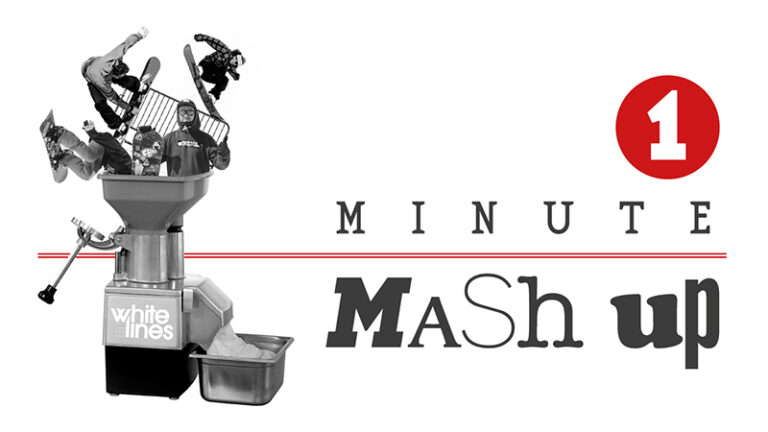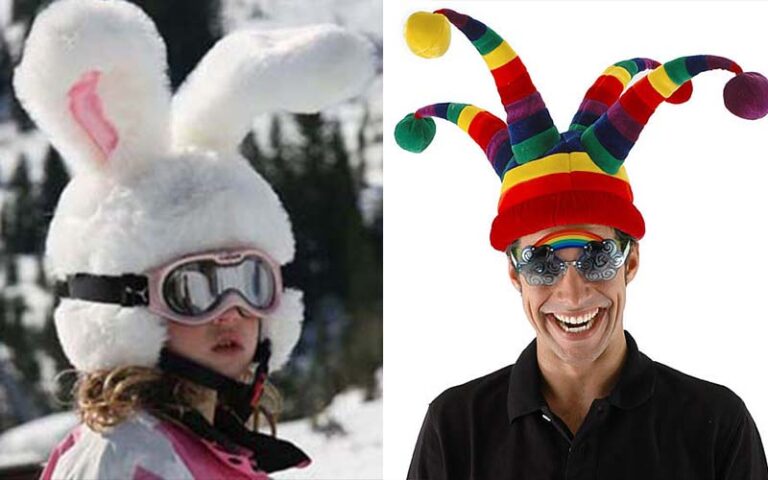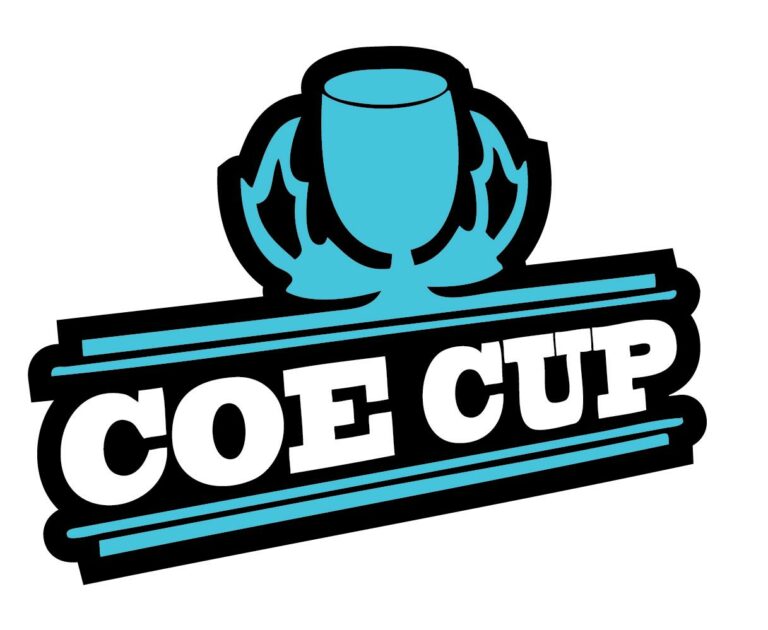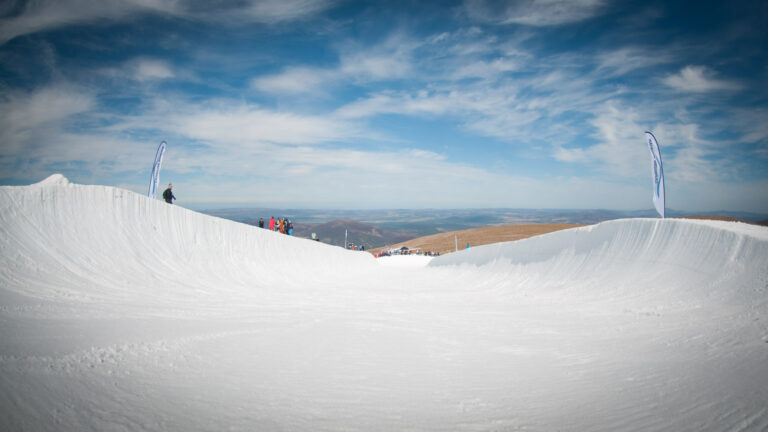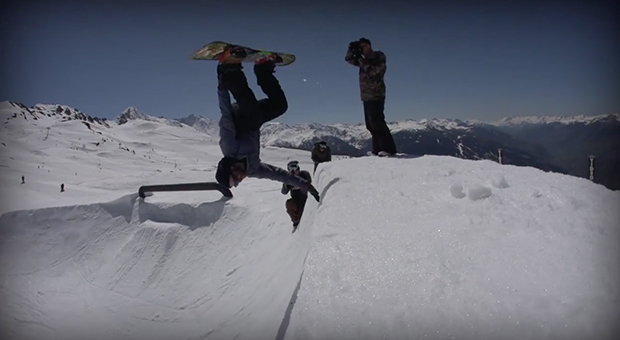For some, snowboarding is all about the backcountry; an empty mountainside, untouched powder and the sense of adventure that comes with getting off the beaten track. If only it wasn’t so hard to get to.
Heliboarding and snowmobiling aside, the best and most likely way you’re gonna get away from those lift queues is by using your legs, but as anyone who’s had to walk more than five metres in a fresh dump of powder knows, it’s not as simple as that.
Previously there have been three options for those wanting to use good old fashioned muscle power to get their mountain top fix: boot packing, snow shoeing, and since the mid-90s, split boarding. Now there is another way, enter MTN Approach.
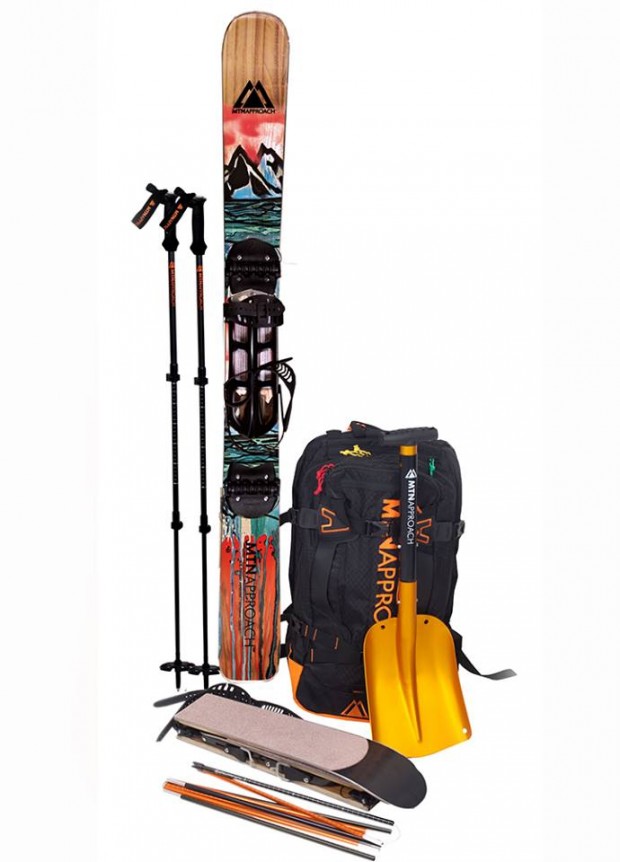
The concept is simple; purpose built touring skis with permanent skins that can fold away and are light enough to be stashed away in a backpack which accommodates a snowboard on the way up, allowing you to hike in the same way that a splitboard allows you to; except you get to ride your choice of board on the way back down.
Don’t believe the hype they said. You don’t want to carry the weight of a snowboard on a skinning mission they said. They being several experienced splitboard professionals and enthusiasts, including Barry Parker, who I roped in to help me with this review. Say hello to Barry.
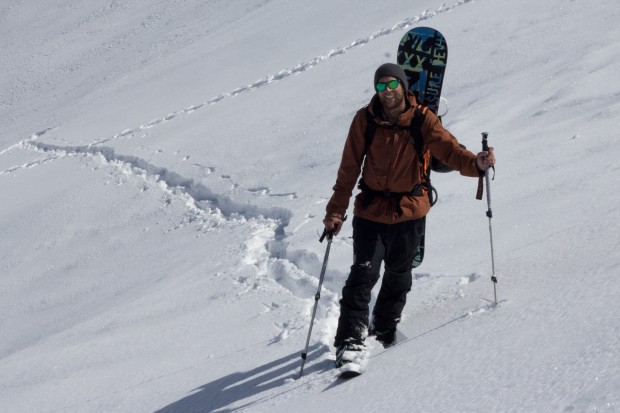
We set off early, armed with the MTN Approach system (we were kindly lent the Bryan Iguchi pro model to give us something pretty to look at as we went up), a Burton Freebird splitboard and our own powder whips. On the first hike I was laden with camera gear and unable to carry an extra backpack, so Barry got first go with the approach skis. Having never seen them before we were both instantly impressed as to how simple and fast the skis were to set up into touring mode; just unfold and pull a few levers.
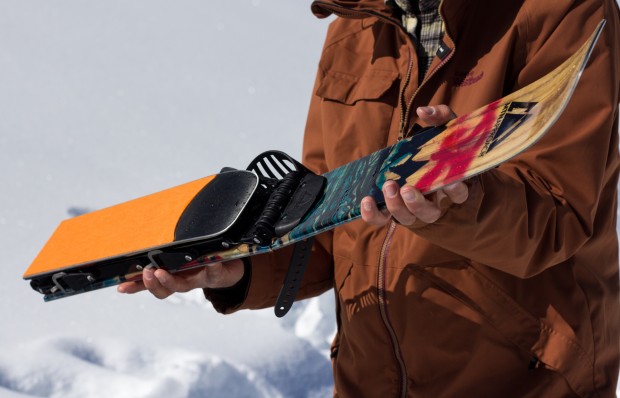
In comparison, the splitboard set up was the usual headache of frozen joints, lots of handy pins to drop in the snow and flappy skins to wrestle into alignment. As a comparison at this stage, the MTN Approach’s approach was looking like the better one.
So we set off, not a massive hike by any stretch, around the 5-600 vertical metre range. Pretty soon we found that the hinges in the approach skis meant that cutting the skin track was problematic, they had a tendancy to bend unnervingly and created a bumpy path,. A win for the split then, as I powered ahead, but in fairness we are both above the 75kg recommended weight limit the particular model we were provided with caters for.
After an hour or so of up, it was time to take some snaps of Barry getting rad on the board he’d brought up with him, much to his joy. Behold:
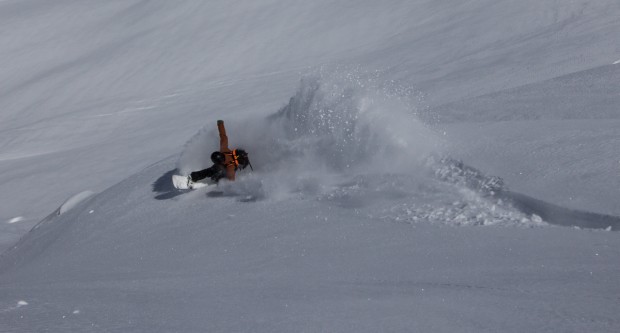
We got a few shots of some drops and natural slash-friendly features, with Barry being able to quickly swap over and skin back up on the skis for each hit; a photographer’s dream. He reckoned that we had what we wanted so we made our way back down the face and to the car to ditch the cameras and swap gear.
It was at this point I realised that I’d accidentally hiked up with a battle ship to ride back down on; in fairness a heavy camera backpack isn’t the fairest of board testing accessories but the split was miles away from the Capita Charlie Slasher I’ve ridden all season in terms of maneuverability, playfulness and fun, especially on piste. I’m not even going to talk about that bit. In Star Wars terms, I was excited to get off this Galactic Cruiser and back into my X-Wing.
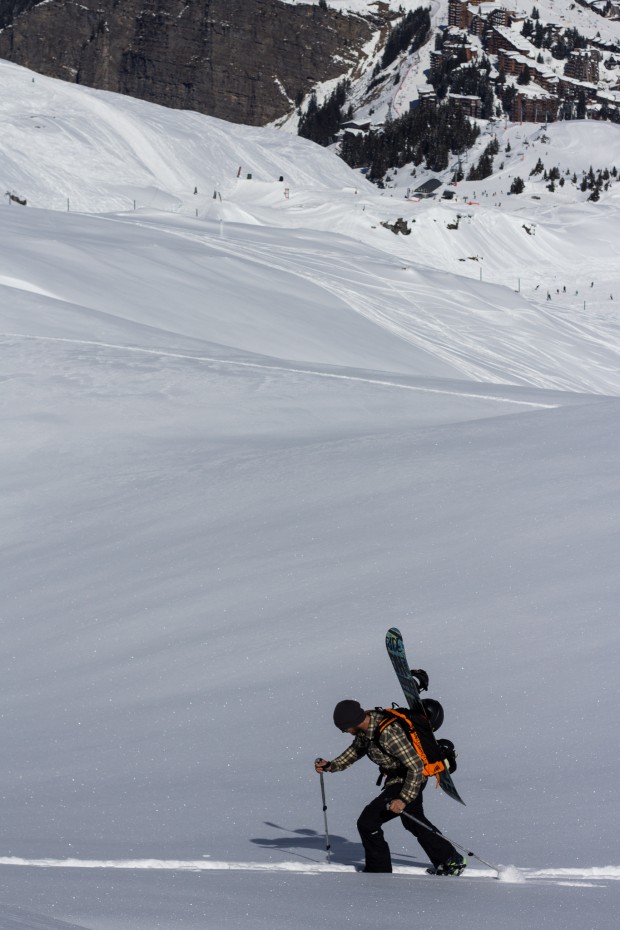
So up again, this time I had the chance to test the skis. On my first time setting them up I comfortably thrashed the far more experienced Barry now reunited with his splitty. As we set off I was amazed at how much lighter and easier the skis were, just as Barry was realising how much heavier his Burton rig was.
For short-to-medium distance hikes the reduced weight underfoot just about makes up for the added weight on your back from carrying a board, which you quickly forget to notice. I would say however that the shoulder straps on the backpack could go tighter to stop the board from swaying so much.
Compared to the split the experience felt way more comfortable and efficient, especially when cornering on the ascent; the shorter skis make that part way easier and less energy sapping, as anyone who has skinned before will understand, learning to untangle my flappy split from the snow and my shins still haunts me. It was certainly easier on the legs and back than using snowshoes, the up and down movement of the legs is what saps your energy.
And then on the way down, all was right with the world again. Reunited with the faithful Slasher the powder was steep and deep and the face shots were aplenty. I was sold, and I think Barry was too.
The MTN Approach won’t be for everyone – true powderhounds will find the excess board weight too much on long tours – but for slackcountry/lift assisted touring with multiple ups and downs in a day, plus some piste riding, these win hands down. The choice is simple: do you want the extra weight on your back on the way up, or on your feet on the way down? For me anyway, the whole point is to have as much fun on the way down, which these facilitated perfectly.
Coming in at around £600, it’s not cheap. Unless you compare it to mid range/high end splitboards which might not ride as well as the board you already have.
Pros
Light underfoot
Get to use your own board
Easy turns on the way up
Well thought out backpack
Quick and easy to set up/break down
Easier on back than snow shoes
Cons
Hard to create skin track
Have to carry board on back
Shoulder straps on backpack could do with some tweaking
Good for
Short/medium tours
Hiking the access natural features or powder booters
Resort based tours
Bad for
Long tours

